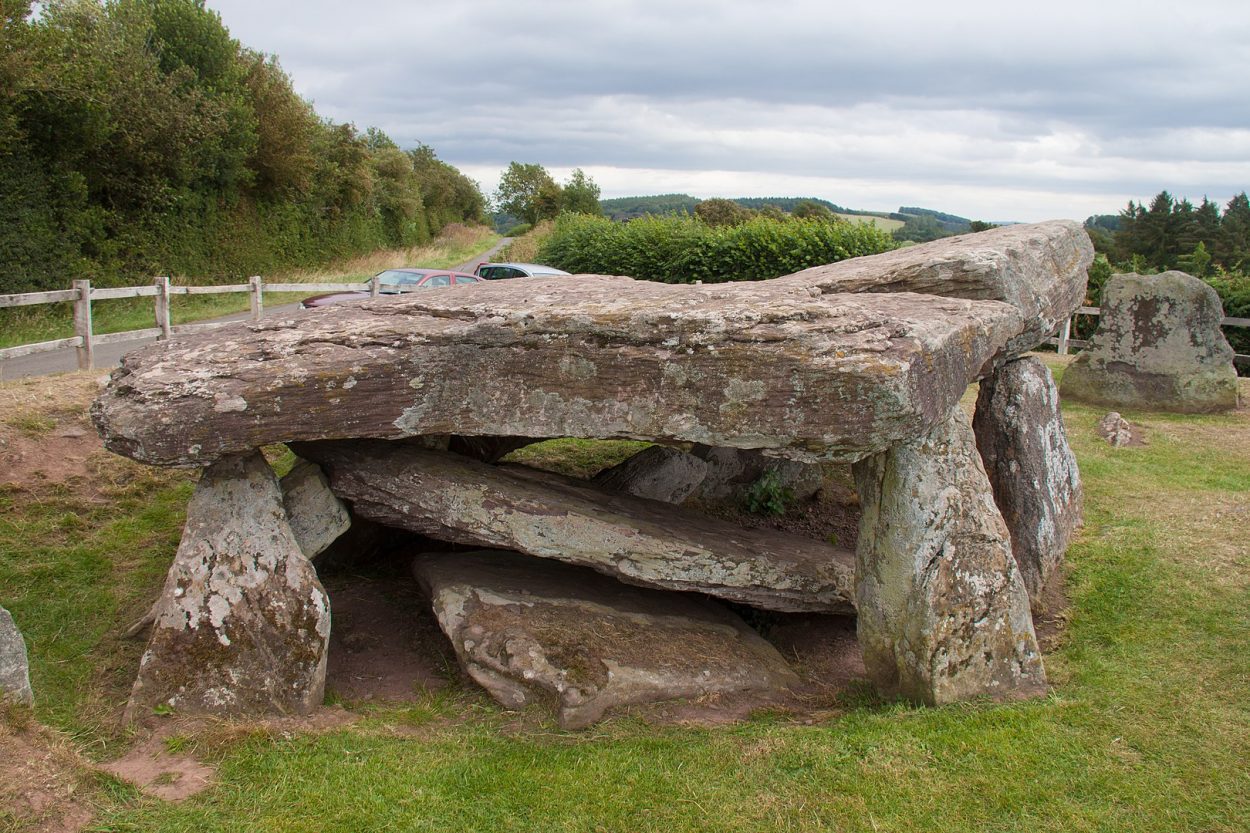A team of archaeologists from the University of Manchester are excavating Arthur’s Stone, a tomb linked to the legendary King Arthur.
Arthur’s Stone is a chambered stone tomb, situated on a hill overlooking both the Golden Valley and the Wye Valley in Herefordshire, England.
Only the larger stones of the inner chamber remain today, placed in a mound whose original size and shape remains a mystery. The chamber is formed of nine upright stones, with an enormous capstone estimated to weigh more than 25 tonnes on top.
The site dates from between 3,700 BC to 2,700 BC during the Neolithic period and has been linked to King Arthur since the 13th century AD.
Legends claim that Arthur defeated a giant at the site, who left an impression on the Quoit Stone as he fell. Other legends suggest that the tomb is a marker for one of Arthur’s great battles, or that the impressions were left by Arthur himself when he knelt there to pray.
More recently, it is thought that the author, CS Lewis, based the stone on which Aslan the Lion is sacrificed in The Lion, The Witch, and The Wardrobe on Arthur’s Stone.
As part of a joint project between English Heritage and the University of Manchester, archaeologists are removing turf for the first time to expose the underlining stratigraphy and record any archaeological remains.
Previous excavations conducted south of the monument by the University of Manchester and the University of Cardiff revealed that the monument originally extended into a field to the southwest, and may have taken the form of a low turf mound with rounded ends.
It is hoped that the latest excavations will unearth archaeological remains found in similar monuments in the same region, such as incomplete skeletal remains, flint flakes, arrowheads and pottery. This will give new insights into the tomb builders and allow the team to further understand the original size and shape of Arthur’s Stone.
“Arthur’s Stone is one of the country’s most significant Stone Age monuments, and this excavation gives a really rare and exciting chance for members of the public to come and see archaeology in action,” said Ginny Slade, Volunteer Manager at English Heritage.
Header Image Credit : JamesWoolley – CC BY-SA 3.0





